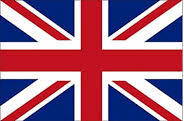TOTI SCIALOJA
(Roma 1914-1998). Pittore italiano tra i più importanti dell’arte astratta italiana, dimostra da subito un talento artistico versatile sia come pittore che come poeta.La sua prima personale la realizza a Genova nel 1940. La svolta definitiva in lui avviene intorno al 1950, quando lascia definitivamente l’arte espressionista e cubista per accostarsi all’astrattismo informale. Partecipa alla Biennale di Venezia nel 1950/52/54.E’ tra il ’55 e il ’65 che soggiorna in America e a Parigi, raggiungendo fama e notorietà.Nel 1970 prende un periodo di pausa ma nel 1982 riprende con vigore il suo lavoro, si dice, dopo aver avuto visione delle opere del Goya.Le sue opere maggiori si collocano nell’ultima fase della sua vita.Insegna e dirige l’Accademia di Belle Arti a Roma, apprezzato anche come poeta e autore di racconti per l’infanzia.Il contributo all’astrattismo informale è principalmente dato dalla tecnica dello “stampaggio” cioè l’uso dello straccio per la realizzazione dei dipinti. Intinge stracci e giornali per lasciare tracce sulla tela.Dopo l’ispirazione ricevuta da Goya, il pittore ha un incontro corpo a corpo con la tela, cioè a dire usa il gomito, le spalle, il polso, realizzando opere dinamiche e cariche di energia.
.jpg) COLLAGE
COLLAGE
(1964-6) - tempera e collage su lamierino, cm 50x70
L’opera assomma le principali tecniche stilistiche ed estetiche entro cui l’artista si è mosso dal momento della sua emancipazione dagli esordi giovanili del figurativismo espressionistico all’approccio con l’opera di Goya, realizzando una pittura, in una dimensionedi assoluta “esplosione gestuale”.Il dipinto realizza una scansione ritmica, elemento portante dell’indagine speculativa del pittore nell’ambito dell’astrattismo concretista. Una sequenza di bande verticali, stese su frammenti di quotidiani incollati su lamierino caratterizza l’opera.
Scheda Catalogo
 Toti Scialoja - He was born in Roma on the 1914 and he died in 1998. Italian painter of the most important italian abstract art. He immediately showed a versatile artistic talent both as a painter as a poet. He made his first solo show in Genoa in 1940. The turning point occurs in him around 1950 when he finally left expressionist and cubist art to approach to informal abstraction. He takes part in the Venice Biennale in 1950-1952-1954.It’s between 1955 and 1965 who is staying in America and in Paris reaching fame and notoriety.In 1970 he took a break but in 1982 he resumed with vigor his works, it’s said, after having see the works of Goya. His major works are placed in the last phase of his life.He teaches and directs the Academy of Fine Arts in Roma, he was also appreciated as a poet and author of children’s stories. The contribution to the informal abstraction is mainly given by the “moulding”, technique that is the use of the rag for the realization of the paintings. He dips rags and newspapers to leave traces on the canvas. After inspiration received from Goya, the artist has a meeting melee with the canvas, that is, he uses the elbow, shoulder, wrist, creating works dynamic and full of energy.
Toti Scialoja - He was born in Roma on the 1914 and he died in 1998. Italian painter of the most important italian abstract art. He immediately showed a versatile artistic talent both as a painter as a poet. He made his first solo show in Genoa in 1940. The turning point occurs in him around 1950 when he finally left expressionist and cubist art to approach to informal abstraction. He takes part in the Venice Biennale in 1950-1952-1954.It’s between 1955 and 1965 who is staying in America and in Paris reaching fame and notoriety.In 1970 he took a break but in 1982 he resumed with vigor his works, it’s said, after having see the works of Goya. His major works are placed in the last phase of his life.He teaches and directs the Academy of Fine Arts in Roma, he was also appreciated as a poet and author of children’s stories. The contribution to the informal abstraction is mainly given by the “moulding”, technique that is the use of the rag for the realization of the paintings. He dips rags and newspapers to leave traces on the canvas. After inspiration received from Goya, the artist has a meeting melee with the canvas, that is, he uses the elbow, shoulder, wrist, creating works dynamic and full of energy.
COLLAGE - (1964-6) - Tempera and collage on sheet - The work combines the main stylistic techniques and aesthetic within which the artist has moved since his emancipation from the youth beginning of the expressionistic representationism to approach to the Goya’s work, creating a painting in a dimension of absolute “Gestural blast”. The painting achieves a rhythmic scansion, carrier of the speculative survey of the artist in the context of the concretist abstract art. A sequence of verical bands stretched out on fragments of newspapers pasted on sheet characterizes the work.